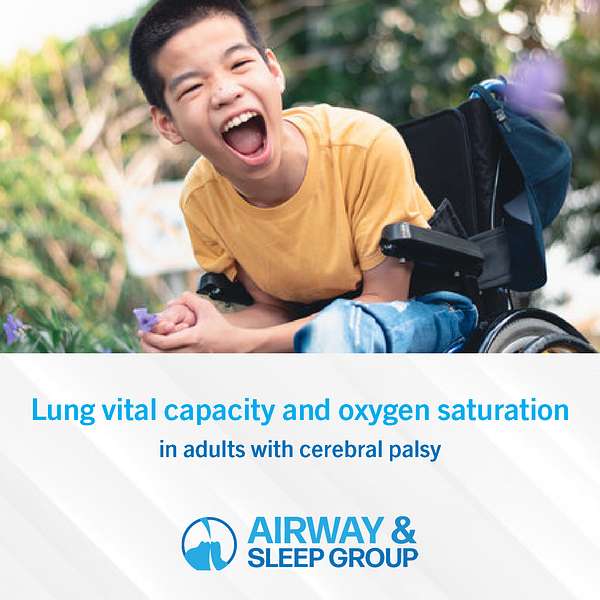
Airway and Sleep Group Podcast
Airway and Sleep Group Podcast
Lung vital capacity and oxygen saturation in adults with cerebral palsy
The study published in the Dove Press journal in 2014 concluded that there is no significant functional dependency between oxygen saturation and chest expansion for adults living with Cerebral palsy. In other words, oxygen saturation is not uniquely determine by chest expansion. Despite the decreased chest expansion and the significantly reduced lung volume in adults with cerebral palsy, they are still receiving sufficient oxygen supply. Moreover, a significant correlation between oxygen saturation and lung vital capacity and oxygen saturation and the deviation of lung vital capacity was also absent.
The second question addresses in the study concerned the deviation of vital lung capacity and decreased chest expansion, in the persons with and without scoliosis. People with scoliosis showed a larger deviation of the measured chest expansion from the normal values than did the people without scoliosis. Though, there was no significant difference in the oxygen saturation for persons with scoliosis and those without.
So the study concluded that decreased chest expansion does not affect the level of blood oxygen saturation.
The natural question that arises is how does oxygen saturation remain at normal levels? All patients in this study underwent physiotherapy and performed respiratory exercises several times a week. Also, they frequently had different therapies like:
- Bobath physiotherapy
- breathing exercises
- and speech and swallowing therapies to prevent contractures
to retain their mobility and facilitate their breathing.
Moreover, they were regularly examined by an experienced orthopedic surgeon and internal doctor. Considering the positive results that swimming exercises have been observed to have on the enhancement of lung vital capacity in children with Cerebral palsy, the normal levels of oxygen saturation observed here likely reflect the training that these patients receive every week.
The scientists concluded that physical therapy and training programs should therefore be a part of schools and centers for persons with physical disabilities. Moreover, since the mobility of individuals with Cerebral palsy is reduced, this suggests that they do not need the same physiological lung vital capacity and chest expansion as normally developed, healthy adults.